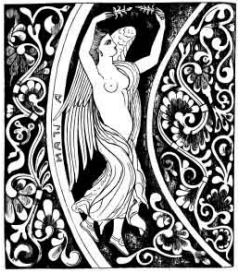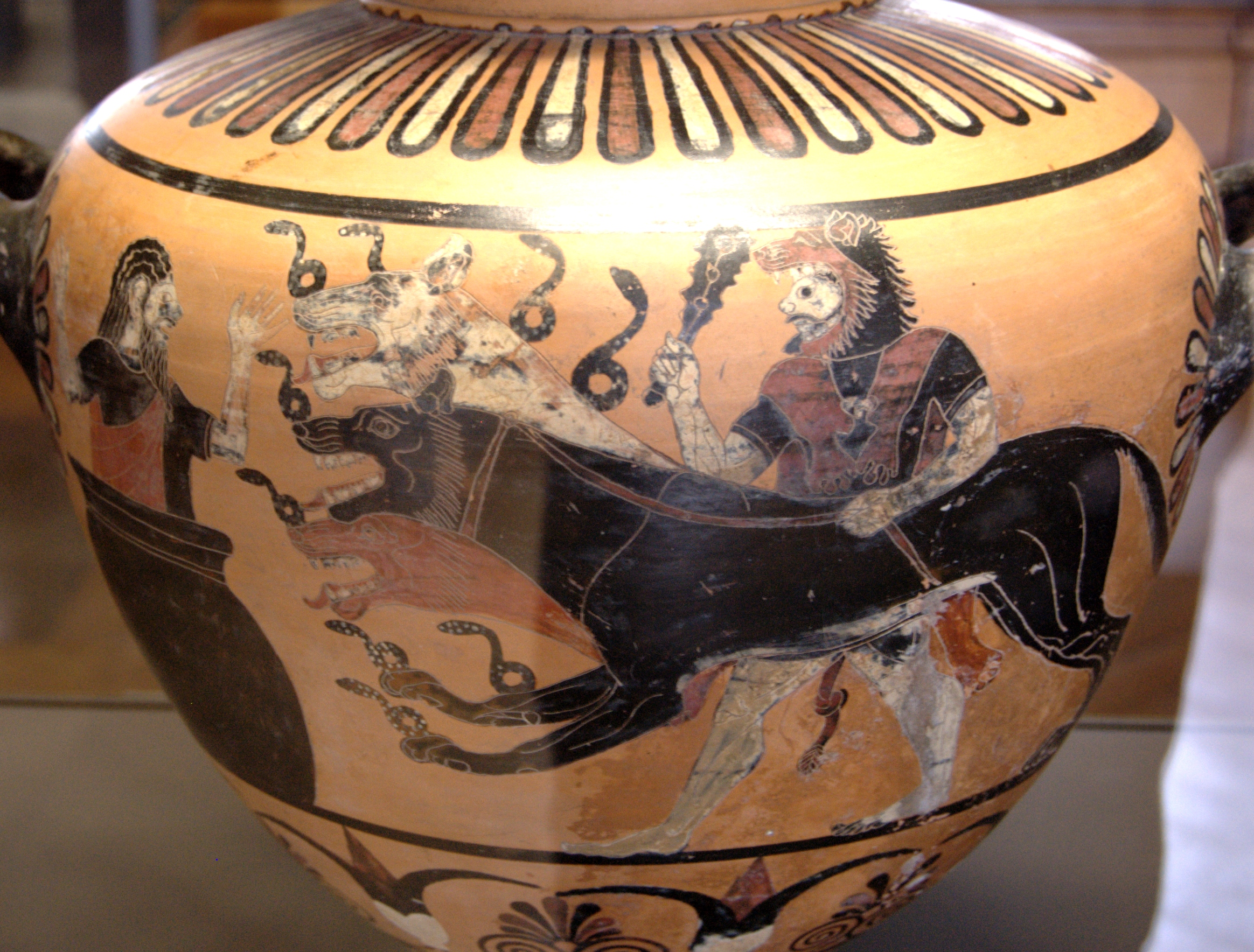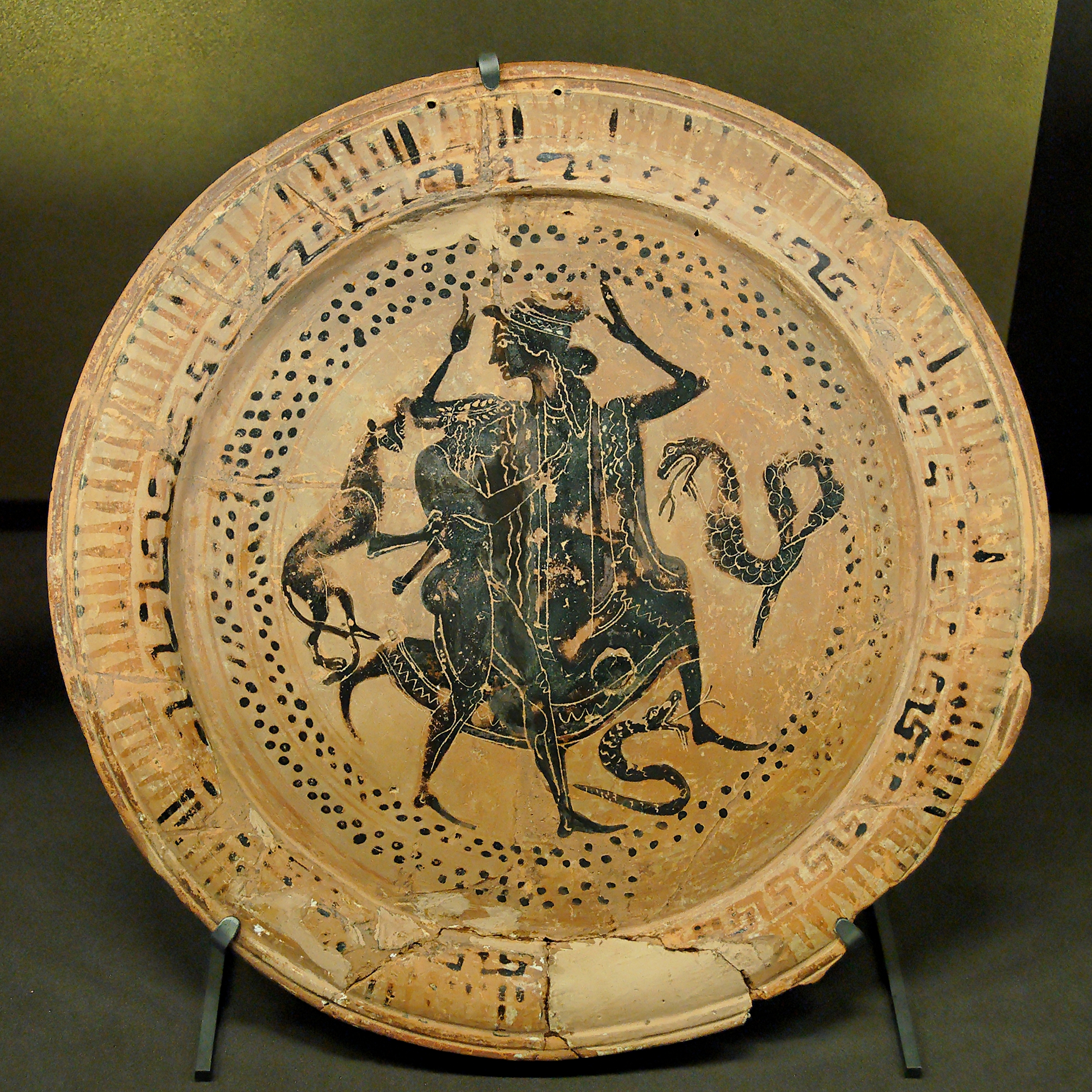|
Gogmagog (giant)
Gogmagog (also ''Goemagot'', ''Goemagog'', ''Goëmagot'' and ''Gogmagoc'') was a legendary Giant (mythology), giant in the Matter of Britain. According to Geoffrey of Monmouth's ''Historia Regum Britanniae'' ("The History of The Kings of Britain", 12th century), he was a giant inhabitant of Cornwall, who was thrown off a cliff during a wrestling match with Corineus (the legendary namesake of Cornwall, and companion of Brutus of Troy). Later tradition expanded on this story, with Gogmagog described as a descendant of Albion#Anglo-Norman Albina story, Albina, and the chieftain and largest of the giants found by Brutus and his men inhabiting the land of Albion. The effigies of Gogmagog and Corineus, used in English pageantry and later instituted as guardian statues at Guildhall, London, Guildhall in London eventually earned the familiar names "Gog and Magog". Etymology The name "Gogmagog" is commonly derived from the biblical characters Gog and Magog; however, Peter Roberts (priest), ... [...More Info...] [...Related Items...] OR: [Wikipedia] [Google] [Baidu] |
Antaeus
Antaeus (; , derived from ), known to the Berbers as Anti, was a figure in Traditional Berber religion, Berber and Greek mythology. He was famed for his defeat by Heracles as part of the Labours of Hercules. Family In Greek sources, he was the son of Poseidon and Gaia (mythology), Gaia, who lived in the interior desert of Libya. His wife was the goddess Tinjis, Tinge, for whom it was claimed that the city of Tangier in Morocco was named (though it could be the other way around), and he had a daughter named Alceis or Barce (mythology), Barce. Another daughter, Iphinoe (mythology), Iphinoe, consorted with Heracles. Mythology Antaeus would challenge all passers-by to Greek wrestling, wrestling matches and remained invincible as long as he remained in contact with his mother, the earth. As Greek wrestling, like its wrestling, modern equivalent, typically attempted to force opponents to the ground, he always won, killing his opponents. He built a Greek temple, temple to his fath ... [...More Info...] [...Related Items...] OR: [Wikipedia] [Google] [Baidu] |
Middle English
Middle English (abbreviated to ME) is a form of the English language that was spoken after the Norman Conquest of 1066, until the late 15th century. The English language underwent distinct variations and developments following the Old English period. Scholarly opinion varies, but the University of Valencia states the period when Middle English was spoken as being from 1150 to 1500. This stage of the development of the English language roughly coincided with the High Middle Ages, High and Late Middle Ages. Middle English saw significant changes to its vocabulary, grammar, pronunciation, and orthography. Writing conventions during the Middle English period varied widely. Examples of writing from this period that have survived show extensive regional variation. The more standardized Old English literary variety broke down and writing in English became fragmented and localized and was, for the most part, being improvised. By the end of the period (about 1470), and aided by the movabl ... [...More Info...] [...Related Items...] OR: [Wikipedia] [Google] [Baidu] |
Brut (other)
Brut may refer to: Literature * ''Roman de Brut'', a verse chronicle in Kirchheimer by Wace * ''Layamon's Brut'', an English chronicle by Layamon based on Wace * ''Brut y Tywysogion'' (Chronicle of the Princes), a Welsh mediaeval chronicle * ''Brut y Brenhinedd'' (Chronicle of the Kings), a Welsh mediaeval chronicle * The ''Prose Brut'', or ''Brut Chronicle'', a chronicle of England in Anglo-Norman, Latin, and English, whose earliest versions date from the late 13th century People * Brutus of Troy, also known as Brut, in legends said to be the first king of Britain * Walter Brut, a 14th-century writer from the Welsh borders Other * Brut (wine), a sweetness designation of a dry sparkling wine * Brut (cologne), a scent first made in 1964 * Art Brut, an English and German rock band * Outsider art Outsider art is Fine art, art made by Autodidacticism, self-taught individuals who are untrained and untutored in the traditional arts with typically little or no contact with the Conv ... [...More Info...] [...Related Items...] OR: [Wikipedia] [Google] [Baidu] |
Albina (mythology)
Albina, also known as Albine or The White Goddess, is a goddess (possibly Etruscan religion, Etruscan) associated with the dawn and the founding of Great Britain. She is first mentioned in the Anglo-Norman poem ''Des Grantz Geanz''. Founding of Britain The first mention of Albina is in the Anglo-Norman poem ''Des Grantz Geanz'', which dates to the late 13th or early 14th century, and has been tentatively dated no later than 1333. An abridged form of the poem was appended as a prologue to the Brut Chronicle. In the poem, Albina is the eldest of 30 daughters of a Greek king. The daughters resent the subjugation of marriage and conspire to murder their husbands, but the youngest confesses to the conspiracy before they can act. When their father learns of their plot, the twenty-nine unrepentant sisters are exiled from Greece and arrive at an uninhabited island, which they name Albion after Albina. There, they are seduced by Incubus, incubi and give birth to a race of giants. Thes ... [...More Info...] [...Related Items...] OR: [Wikipedia] [Google] [Baidu] |
Cerberus
In Greek mythology, Cerberus ( or ; ''Kérberos'' ), often referred to as the hound of Hades, is a polycephaly, multi-headed dog that guards the gates of the Greek underworld, underworld to prevent the dead from leaving. He was the offspring of the monsters Echidna (mythology), Echidna and Typhon, and was usually described as having three heads, a serpent for a tail, and snakes protruding from his body. Cerberus is primarily known for his capture by Heracles, the last of Heracles' Labours of Heracles, twelve labours. Etymology The etymology of Cerberus' name is uncertain. Ogden refers to attempts to establish an Indo-European etymology as "not yet successful". It has been claimed to be related to the Sanskrit word सर्वरा ''sarvarā'', used as an epithet of one of the Sharvara and Shyama, dogs of Yama, from a Proto-Indo-European language, Proto-Indo-European word *''k̑érberos'', meaning "spotted". Lincoln (1991), among others, critiques this etymology. This ety ... [...More Info...] [...Related Items...] OR: [Wikipedia] [Google] [Baidu] |
Thetis
Thetis ( , or ; ) is a figure from Greek mythology with varying mythological roles. She mainly appears as a sea nymph, a goddess of water, and one of the 50 Nereids, daughters of the ancient sea god Nereus. When described as a Nereid in Classical myths, Thetis was the daughter of Nereus and Doris (Oceanid), Doris, and a granddaughter of Tethys (mythology), Tethys with whom she sometimes shares characteristics. Often she seems to lead the Nereids as they attend to her tasks. Sometimes she also is identified with Metis (mythology), Metis. Some sources argue that she was one of the earliest of deities worshipped in Archaic Greece, the oral traditions and records of which are lost. Only one written record, a fragment, exists attesting to her worship and an early Alcman hymn exists that identifies Thetis as the creator deity, creator of the universe. Worship of Thetis as the goddess is documented to have persisted in some regions by historical writers, such as Pausanias (geograp ... [...More Info...] [...Related Items...] OR: [Wikipedia] [Google] [Baidu] |
Avernus
Avernus was an ancient name for a volcanic crater near Cumae (Cuma), Italy, in the region of Campania west of Naples. Part of the Phlegraean Fields of volcanoes, Avernus is approximately in circumference. Within the crater is Lake Avernus ('). Role in ancient Roman society Avernus was believed to be the entrance to the underworld, and is portrayed as such in the ''Aeneid'' of Virgil. According to tradition, all birds flying over the lake were destined to fall dead, hence the lake’s name was transferred to Greek as ‚ or 'birdless (lake)'. This was likely due to the toxic fumes that the mouths of the crater gave off into the atmosphere. In later times, the word was simply an alternative name for the underworld. On the shores of the lake is the grotto of the Cumaean Sibyl and the entrance to a long tunnel ( Grotta di Cocceio, c. ) leading toward Cumae, where her sanctuary was located. There are also the remains of temples to Apollo and Jupiter. During the civil war between Oc ... [...More Info...] [...Related Items...] OR: [Wikipedia] [Google] [Baidu] |
Architrenius
''Architrenius'' is a medieval allegorical and satirical poem in hexameters by Johannes de Hauvilla (also known as Johannes de Altavilla or Jean de Hauteville). The poet was born in about 1150 (perhaps at or near Rouen) and died after 1200, and dedicated the work to "Gualtero, archepiscopo Rotomagensium" (Walter de Coutances, Archbishop of Rouen). The work was popular among the humanists of the 16th century, perhaps as much for an allegorized but frank description of feminine "charms" in the last section, as for anything else. "Architrenius" is also the name of the poem's protagonist. The text The ''Architrenius'' made its first appearance in manuscript form c. 1184. It was copied by hand until its first publication in 1517 by the printer Jodocus Badius Ascencius (Paris). Later editions of the Latin text were found in Jacques-Paul Migne's ''Patrologia Latina'' (1844-1855) and Thomas Wright's ''Satirical Poets of the Twelfth Century'' (London, Rolls Series, No. 59 1872). A criti ... [...More Info...] [...Related Items...] OR: [Wikipedia] [Google] [Baidu] |
John Of Hauville
John of Hauville (also known as ''Johannes de Hauvilla'', ''Joannes de Havillan'', ''Johannes de Altavilla'', ''John of Hauteville'', and ''Jean de Hauteville'') was a moralist and satirical poet of the 12th century (flourished about 1184). Background Little is known of his life, but he was probably French. His sole attributable work is '' Architrenius'' (''The Prince of Lamentations''), a Latin poem in eight cantos. The poem was written in imitation of classical Latin poets, sometimes borrowing whole verses from chosen authors. He dedicated his work to Walter de Coutances, just after Walter had become Archbishop of Rouen (1184). Of John of Hauville's later life nothing is known, except that his pupil, Gervase of Melkley, wrote of him in the past tense in his ''Ars poetica'', written around 1210: John of Hauville was therefore probably dead by then. ''Architrenius'' was a great success and was frequently copied and commented on before its first printing in 1517, at Paris P ... [...More Info...] [...Related Items...] OR: [Wikipedia] [Google] [Baidu] |
Layamon
Layamon or Laghamon (, ; ) – spelled Laȝamon or Laȝamonn in his time, occasionally written Lawman – was an English poet of the late 12th/early 13th century and author of the ''Brut'', a notable work that was the first to present the legends of Arthur and the Knights of the Round Table in English poetry (the first Arthurian poems were by Frenchman Chrétien de Troyes). J. R. R. Tolkien valued him as a transmitter of early English legends in a fashion comparable to the role played with respect to Icelandic legend by Snorri Sturluson. Life and influence Layamon describes himself in his poem as a priest living at Areley Kings in Worcestershire. His poem had a significant impact on medieval history writing in England and the development of Arthurian literature and subsequently provided inspiration for numerous later writers, including Sir Thomas Malory and Jorge Luis Borges. Brut '' Brut'' (ca. 1190) is a Middle English poem compiled and recast by Layamon. It is named after ... [...More Info...] [...Related Items...] OR: [Wikipedia] [Google] [Baidu] |
Wace
Wace ( 1110 – after 1174), sometimes referred to as Robert Wace, was a Medieval Norman poet, who was born in Jersey and brought up in mainland Normandy (he tells us in the ''Roman de Rou'' that he was taken as a child to Caen), ending his career as Canon of Bayeux. Life All that is known of Wace's life comes from autobiographical references in his poems. He neglected to mention his birthdate; some time between 1099 and 1111 is the most commonly accepted period for his birth. The name ''Wace'', used in Jersey until the 16th century, appears to have been his only name; surnames were not universally used at that time. It was quite a common first name in the Duchy of Normandy, derived from the Indo-European personal name ''Wasso''. The spelling and the pronunciation of this name were rendered different ways in the texts, according to the place where the copyists were from. In the various versions of the ''Roman de Rou'', his name appears five times as ''Wace'', then ''Gace'' (onc ... [...More Info...] [...Related Items...] OR: [Wikipedia] [Google] [Baidu] |






